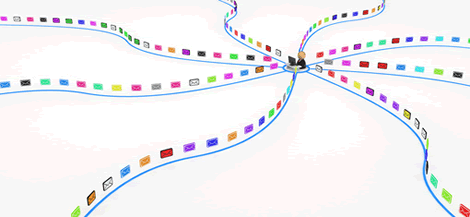- POPULAR ARTICLES
- Thank You Words
- Retirement Wishes
- Face to Face
Effective Email Communication
Why are guidelines for effective email communication needed? Don't we all know how to use email?
According to Pew Internet and American Life Project statistics reported in February 2009, 90% of Internet Users between the ages of 18 and 72 use email.
 Over 70% of email users that are employed admit that they check their personal email at work an average of three times a day.
Over 70% of email users that are employed admit that they check their personal email at work an average of three times a day.
Email can be both a big productivity tool (70% of people report email has enhanced their productivity) and a big waste of time (over 90% of email is spam).
Given these numbers, a few tips for more effective email communication can be quite useful.
Email communication tips
• Keep it short. If you find you have to write a very long email to do justice to the subject, you may be better off having a face to face talk. Long emails tend to breed long replies. The opportunities for misunderstandings are endless.
• Use meaningful titles, short but descriptive of the topic. This is going to be useful for future retrieval of emails.
• Create one email per topic, if you have multiple topics to discuss with the recipient, create several emails. This will also help in keeping the cc to the minimum needed, and no more.
• Don’t copy everybody if they don’t need to be copied. Each subject will call for copying specific people. Do not include others just to “keep them in the loop” while an email thread is building. Just bring them in the loop when the issue is resolved.
• Check message for typos before sending it. This is especially important when sending emails from tablets and smart phones. For informal communication, you can get away with typos and abbreviations, but in business communication, follow the same guidelines for phones or tablets as you would with regular email.
• Use the Reply All button sparingly. When people get in the habit of replying to all original recipients, people’s inboxes tend to fill up very quickly. In addition, people will start to ignore emails, knowing that they may just be the result of a Reply All, and the message is not really intended for them.
• Use an anti spam tool. Keep in mind that these tools are not 100% accurate, which means that some good emails will be trapped by the antispam tool and some unwanted email will go to your precious inbox.
• Don’t forward chain letters or email rumors. If you receive what looks like scam email, report this to your email provider. Most companies and providers have a means for email users to report email abuse and potential scams.
• Avoid Flagging Everything as Important. Not all email that you produce or send is important; if you mark a lot of your messages as important, people will start to ignore that flag in your messages. Be selective about it.
You can start following these guidelines for effective email communication right away. You may even share them with people that are driving you crazy with their email habits. Just don’t say it that way.
Where do you want to go next?




